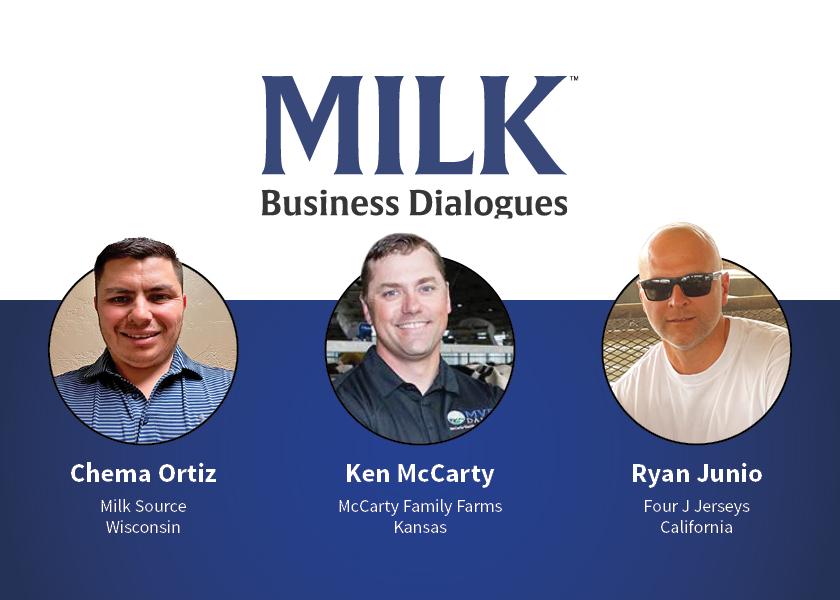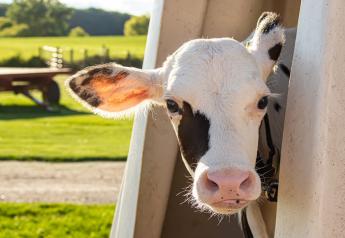Leaning into the Future: Producers Share How Technology Enriches Their Operations

Recently on a Farm Journal Milk Business webinar, three dairy producers shared what technologies they currently have invested in and additional technologies that they are looking at to help push their operations forward.
Milk Source, Wisconsin
Chema Ortiz, a herd management specialist for Milk Source in Wisconsin, says that like most of the industry, they too have been challenged with labor shortages over the last few years.
“The way we did things five years ago is definitely different now,” he says. “And, it’s going to be different five years from now too. We try to get better, more efficient and also improve some of our health and reproduction.”
Intending to reduce labor, Ortiz says one of the ways Milk Source has been able to do that is by adding sprayers in their parlors, as well as utilizing activity collars on some of their dairies. Today, Milk Source is home to 35,000 cows across five locations located in three different states.
McCarty Family Farms, Kansas
Ken McCarty with McCarty Family Farms in Kansas has recently installed the first of two DeLaval rotaries that include a whole host of technologies.
“Some of the advantages that we see with that system are obvious, it's a much more labor-efficient way of milking cows; easier on the cow and easier on the human,” he says. “But we've also installed post dip robots that have eliminated a little bit of labor from the wheel while maintaining basically the same level of application.”
Additionally, McCarty’s also feels like cow activity monitoring systems are making an impact for their dairies located in Kansas, Nebraska and Ohio.
“The Delpro system tracks daily weights, animal activity… all those sorts of things. We're still learning, but we are diving into the insights to better understand how we can optimize our system as a whole to drive productivity and profitability,” he says.
Four J Jerseys, California
Out west in California, Ryan Junio with Four J Jerseys in Pixley says his biggest focus has been on calf rearing and improving calf health before outsourcing them to a custom calf ranch.
“We've taken on new pasteurization processes and colostrum freezing processes trying to mitigate any disease,” he says. “We’re also in the midst of looking at installing pre and post-dip sprayers trying to reduce labor and trying to become more efficient on the dairy in that way.”
Junio, who milks 5,000 Jerseys and farms 12,000 acres in Tulare County, shares that they are also in the process of incorporating a monitoring system to help manage herd health and dial in on reproduction efficiencies.
“We don't have a system online yet,” he says. “We plan to become more efficient in terms of labor and in terms of repro hormones. We think that the payback there is immense. So that's something we're aggressively trying to get online right now.”
The Next 24 Months
Technology is also the focus for these three producers in the next 24 months. Junio says they plan on bringing the cow monitoring system on board and want to dial in on efficiencies across the whole herd, especially with herd health.
“The sprayers in the carousel are going to be able to reduce labor,” he says. “We're trying to ramp up efficiencies in the carousel and [milk] a few more cows 3x versus 2x. We're looking at a DeLaval system that incorporates a second vacuum line, that will enable us to ramp up the vacuum, too."
New to utilizing activity collars, Ortiz says that those at Milk Source are trying to learn the program the best they can as a trial. The team is also working to better incorporate sort gates.
“I see [this technology] as part of the plan in the future for other sites,” he says. “What we are seeing from the beginning looks promising.”
Additionally, Milk Source is in a trial with an artificial intelligence company working with cameras.
“As that technology gets better, it's definitely something that we're going to try and utilize the best we can,” Ortiz shares. He outlines that from their point of view, an investment in technology must either reduce labor or improve cow health and reproduction.
The standards that dairies hold themselves continue to get higher and higher and that is certainly the case for McCarty, who shares that they are looking at investing in additional robotics on their farms.
“Anything that we can do that standardizes practices on the farm, drives down labor costs and can benefit the welfare of our team members is worth pursuing,” he says. He adds that the primary focus right now is on robotics and autonomous tractors.
To hear these three producers talk more about technology and how it is playing a big role on their farms, watch the entire webinar here: https://fjwebinars.com/account/register/dairy-herd-management/167







